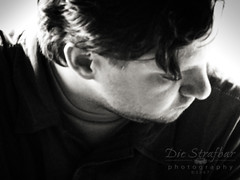Fables of the Reconstruction
As costs for reconstruction in Iraq begin to topple the $200 Billion mark, one must ask what this money has been spent on and what results have been noted. Several times thus far, I have noted that what you are fed through the corporate media is a limited and skewed view of Iraq. Primarily, the news reporters are spoon fed their news by military public affairs officers who boiled down numbers and events for easy consumption by the concerned but faint-hearted American citizen. These reporters have such little integrity that they rarely, if ever, venture outside their Baghdad hotels for their latest breaking story. Dressed up in flak jackets and kevlar helmets, they intimate the violence and danger they must forego to bring us the news. Let's be clear on this from the start, Baghdad is NOT Iraq and Iraq is not Baghdad. The media has successfully convinced the Dancing-with-a-Star loving American viewer that Iraq is a homogenous and violent country. Wrong.
One can successfully break down the situation in Iraq into two parts; Baghdad and rural Iraq. Of course this is a bit oversimplified since there are a few larger cities that are strongholds for insurgents, but in general this division holds true for analysis. Baghdad is a fairly modern city structurally. During the toppling of Hussein, much of Baghdad suffered destruction in the form of communication, electrical, and water breakdown. Buildings were destroyed and roads tore up. Much of the residential areas remained relatively intact but did not escape the attack unscathed. Because of this, the economy was also completely disrupted; leaving people out of jobs, devalued money, disrupting life-support industries such as food and medical services. Obviously, there is a lot of fodder for a fearful reporter to regurgitate as progress in reconstruction. But what about the rest of rural Iraq?
Rural Iraq is unequivocally unlike Baghdad. Most people live in humble mud or brick homes, eeking out a subsistence by herding goats, sheep, or the occaisional cow. Most towns east and north of Baghdad are full of beat up, barely running cars, donkeys, and bicycles for transportation. It is hard to see any evidence of desctruction caused by our troops moving toward Baghdad, or any since. Mostly what is seen are the craters produced by the occaisional detonation of IEDs along roadsides and bridges. There are rarely organized conflicts with insurgents, or any small arms fire from hostiles. Most people go about their days just trying to get by.
In Baghdad, infrastructure indeed existed before the invasion, so it is obvious that Reconstruction would and should include the replacement of said infrastructure; power plants, water processing plants, road rebuilding, building construction, etc. But it is not so easy to decide what should be done with the rural areas that never had such infrastructure in the first place. Because of the collapse of the economy, many rural Iraqis farm or herd for a subsistence and then trade or try to sell what extra they have. But there is no industry to produce a product and thus bring money into an empty economy. With that in mind, on my latest convoy I was able to finally notice some change in the barren landscape. In the emptiness of eastern Iraq, towers to run power lines have been planted, roads have been crudely repaved, irrigation canals are flowing with water.
The question here is twofold. On one hand, what goals for "reconstruction" could be in place for areas that have never had this infrastructure previously. How far should the development of rural Iraq be taken and to satisfy what need? Secondly, on an economic level, how has it been considered that the average jobless subsistence farmer/herder should be able to pay for this electricity, which has now been brought to the front door of his mud home? To power the electric items that he doesn't yet have? Is this just another thinly veiled attempt at subjugating another country to be forced consumers? Are we building them up for exploitation?
One can successfully break down the situation in Iraq into two parts; Baghdad and rural Iraq. Of course this is a bit oversimplified since there are a few larger cities that are strongholds for insurgents, but in general this division holds true for analysis. Baghdad is a fairly modern city structurally. During the toppling of Hussein, much of Baghdad suffered destruction in the form of communication, electrical, and water breakdown. Buildings were destroyed and roads tore up. Much of the residential areas remained relatively intact but did not escape the attack unscathed. Because of this, the economy was also completely disrupted; leaving people out of jobs, devalued money, disrupting life-support industries such as food and medical services. Obviously, there is a lot of fodder for a fearful reporter to regurgitate as progress in reconstruction. But what about the rest of rural Iraq?
Rural Iraq is unequivocally unlike Baghdad. Most people live in humble mud or brick homes, eeking out a subsistence by herding goats, sheep, or the occaisional cow. Most towns east and north of Baghdad are full of beat up, barely running cars, donkeys, and bicycles for transportation. It is hard to see any evidence of desctruction caused by our troops moving toward Baghdad, or any since. Mostly what is seen are the craters produced by the occaisional detonation of IEDs along roadsides and bridges. There are rarely organized conflicts with insurgents, or any small arms fire from hostiles. Most people go about their days just trying to get by.
In Baghdad, infrastructure indeed existed before the invasion, so it is obvious that Reconstruction would and should include the replacement of said infrastructure; power plants, water processing plants, road rebuilding, building construction, etc. But it is not so easy to decide what should be done with the rural areas that never had such infrastructure in the first place. Because of the collapse of the economy, many rural Iraqis farm or herd for a subsistence and then trade or try to sell what extra they have. But there is no industry to produce a product and thus bring money into an empty economy. With that in mind, on my latest convoy I was able to finally notice some change in the barren landscape. In the emptiness of eastern Iraq, towers to run power lines have been planted, roads have been crudely repaved, irrigation canals are flowing with water.
The question here is twofold. On one hand, what goals for "reconstruction" could be in place for areas that have never had this infrastructure previously. How far should the development of rural Iraq be taken and to satisfy what need? Secondly, on an economic level, how has it been considered that the average jobless subsistence farmer/herder should be able to pay for this electricity, which has now been brought to the front door of his mud home? To power the electric items that he doesn't yet have? Is this just another thinly veiled attempt at subjugating another country to be forced consumers? Are we building them up for exploitation?








